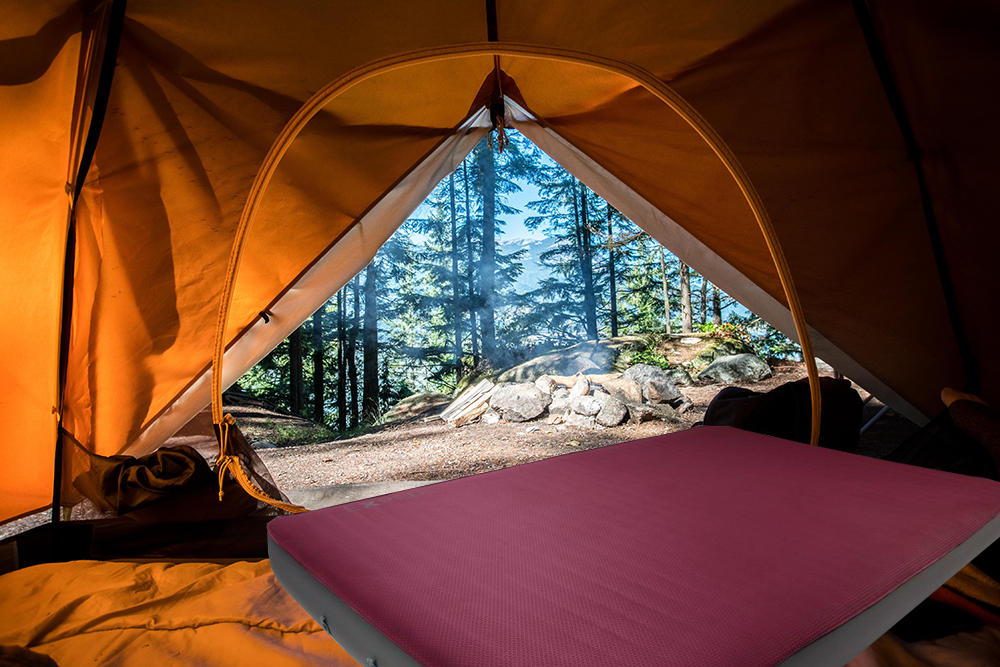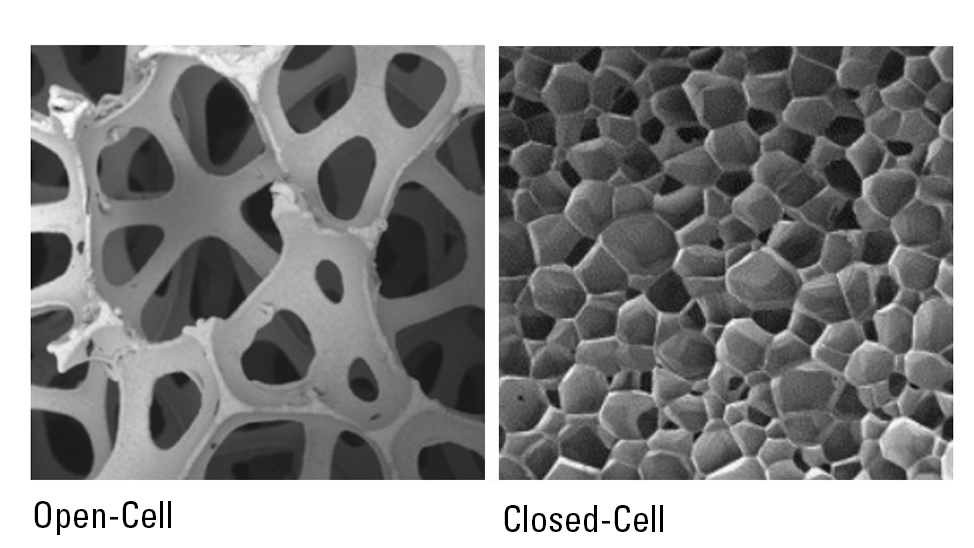How Do Self-Inflating Sleeping Pads Work?

Ever wonder how self-inflating sleeping pads work?
There is open cell foam inside the pads. When the valve opens, it allows air to expand the foam inside.
The spongy open cell foam material within the pad wants to expand to its original state after being squished down and rolled up.
The vacuum seal within the mat is broken when the valve is opened, allowing the foam to expand back to its original size.
As the foam material expands, the mat draws air inside causing it to inflate.

Difference Between Closed-Cell and Open-Cell Foam
Closed-Cell Foam Pads
Closed-cell foam pads are denser. As the name implies, each of those tiny cells of air is enclosed within its walls. So none of those cells interconnect with each other.
An example of a closed-cell foam pad would be yoga mats.
Benefits
The main benefit of taking closed-cell foam pads with you for camping is how lightweight. They are also usually more affordable than other mattress pad types.
Cons
These types of mattress pads are thin and some people might find that it doesn’t provide enough support and comfort when camping. While they are lightweight, they are not compressible like the open-cell variations.
It’s best to figure out which camping mattress thickness is best for your situation.
Open-Cell Foam Pads
Open-cell foams are basically a sponge where cells can interconnect with each other, allowing air to fully inflate the foam from its compressed state.
Benefits
Open-cell foam pads provide more support and comfort than closed-cell variations. They can also be compressed and packed fairly small as well. Set up is a breeze and most pads will inflate anywhere from 20-30 minutes. Larger pads might take a little longer, but you can finish off the firmness with a manual air pump.
Cons
The price is a factor if you’re looking for self-inflating pads for camping vs closed-cell types. There’s also that risk of having a puncture in the shell.
Our Tests
We have a couple of self-inflating foam pads from Exped and Sea to Summit. Both have worked great for us and it saves us a lot of time setting up basecamp.
One thing to take note, the overall footprint of these pads, when compressed and packed will greatly differ in size.
For instance, Exped’s self-inflating pad is amazing, but they are very large when packed up. If you have a family of 5, this will take up a lot of cargo space.
If you’re meeting up with your friends for camping and you’re going by yourself, the Exped is definitely worth the price for a good night’s sleep.
We highly recommend Sea to Summit’s line of self-inflating pads if you’re camping with your family. They pack up small and we can bring 3-4 pads that would take up the same space as one Exped pad.
Whatever you decide, you’ll be happy with your decision. Definitely, one of the many camping gears we can’t live without when tent camping.






